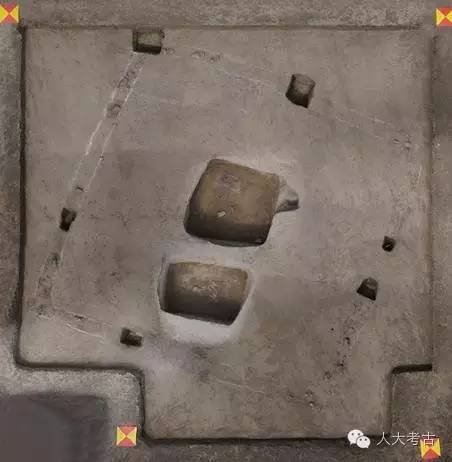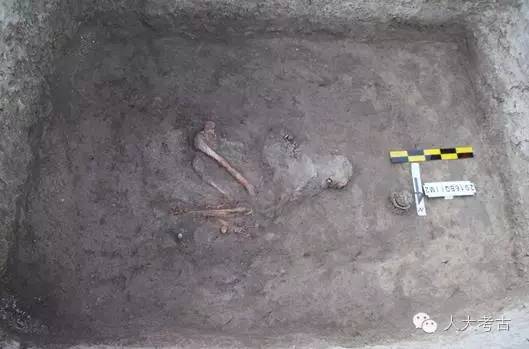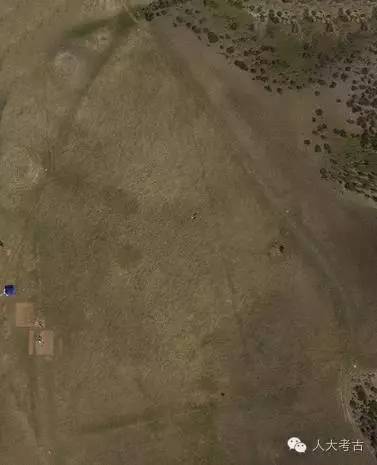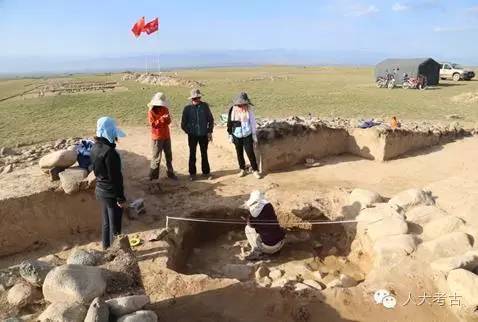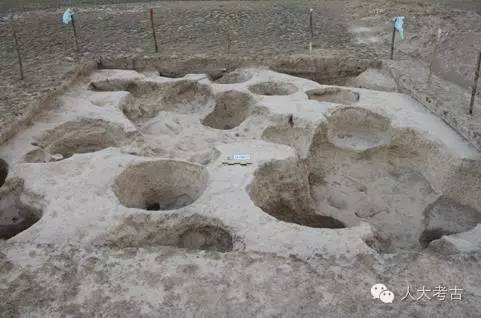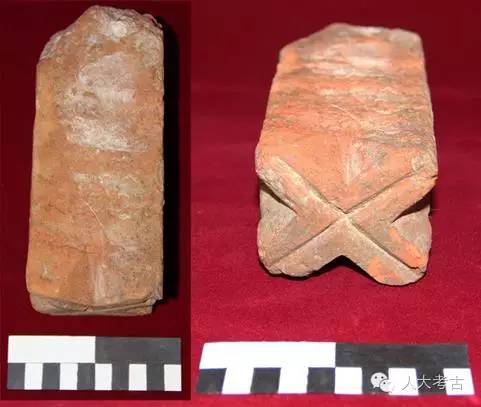Information
Considerable gains of the first archaeological excavation at Quanshuigou and Dumudu’erbudege in Xinjiang province have been achieved
Translated by IICC-X Tian Meng
From July 6
to September 1, 2016, academics and students from
Ruins of
Quanshuigou, within the jurisdiction of the 5th Company of the 84th Regiment in
Ruins of
Dumudu’erbudege, 36 kilometers or so to Bole city from its southeast and
Hariturege river valley on its eastern side, lying in east of Minggetaoleha
village Xiaoyingpan town Bole city Bortala Mongol Autonomous Prefecture
Xinjiang province, sits on the top of another alluvial fan at the foot of south
of mountain of Alatao. Dotted with dozens of stone mound graves and other
remains, the ruins are on the gravel layer and under the surface of the earth
0.1-1.5 meters, featuring grassland as the modern earth’s surface. Two areas,
the south and north, were excavated, covering 1000 square meters. In the
southern area, 4 graves were unearthed and a triangular settlement encircled by
stone wall was dissected. In the northern area, a rectangular yard was
excavated.
In the
southern area, the 4 graves are all mounds, the largest of which is 17 meters
in diameter with sheds underneath. It features earthen-shaft or the stone piled
chambers. The deceased, lying from the east to west with their head in the
east, were bent on their sides or straight on their back. Burial objects,
whistles made of bones and rusty ironware were found in some of the graves. The
ruins had been built at the stage of Scythian Culture about the middle period
of 1BC-1000 BC. The triangular settlement encircled by stone wall (stone city)
equipped with doors on the south side is some 75,000 square meters and the
western wall is under three small unearthed graves one upon another, which had
been put up no later than the graves. The dissection indicated that the stone
enclosure (the wall), 1-2 meters wide, slightly higher than the surface of the
ground, had its bottom been erected by piling up earth and stones and the upper
layer with stones. Inside the enclosure, a layer of red clay is under the
surface of the ground of 0.3 meter, suggesting it might be the active surface
then.
In the
northern area, the rectangular yard is about 1600 square meters, higher than
any other building around it as many as 1-2 meters, doors on its south side.
The body of wall had been mounded in a way of layer upon layer and its interior
had been built with stones. 20-30 regular circular cellars 2-3meters in
diameter, with circular kitchens for some cellars on the ground, were excavated
in the yard. The fragmentary pieces of pottery were characterized by remnant
pieces of jars with contracted mouths of sandy ferruginous ware, added to other
burial objects including handles of green glazed pottery, hairpins made of
bones, a red brick bearing scratches on one side and the bones of livestock
such as horses, cattle and sheep etc. It estimated that the yard had been used
as storehouse. The unearthed articles resemble those found in Dalete ancient
city more than 60 kilometers away from southeast of the ruins, probably in the
Yuan Dynasty (1271-1368).
本次发掘共揭示出三个时期的文化遗存,分别为公元前2千纪后半叶的青铜时代晚期遗存、公元前1千纪前中叶的早期铁器时代遗存,以及蒙元时期遗存,对于研究欧亚草原地带距今3500年以来的文化谱系、聚落形态、丧葬习俗、经济形态、技术系统、社会状况和人地关系,具有重要价值。其中这次发现的青铜时代晚期的铜铁复合制品,年代或与甘肃磨沟人工铁器年代相当,为研究早期冶铁技术的传播增添了新资料;同时期的带基槽的土石墓围和铸铜“坩埚”也都罕见。三角形石围聚落(石城)时当游牧发达的斯基泰文化时期,当时长城沿线直至天山以北的北方草原地带都是常见墓葬而几乎不见居址,因此这个发现很值得关注。蒙元时期的方院聚落在都木都厄布得格遗址附近近山草原地带已经发现数个,其性质、功能及其与河谷低地大城的关系等,也都令人感兴趣。我们会通过今后的发掘和调查进一步探索究明这些问题。
The cultural
heritages from 3 periods have emerged during this excavation, comprising the
late Bronze Age (the latter half of 2000BC-1001BC), the early Iron Age (the
middle period of 1000 BC-1BC) and the Yuan Dynasty (1271-1368), making great
contributions to the study of cultural genealogy system of Eurasian steppes for
3500 years, settlement pattern, customs of funeral affairs, economic form,
technological system, social state and the ties between the people and land. The
products of iron-copper alloy in the late Bronze Age had been made at the same
time with the production of manual ironware at Mogou in
The
excavation of this time was another one conducted on our own initiatives in
Xinjiang province after that of Kalaxilikebiete groves in the east of Aletai
city being excavated in 2014. It represents that our School of Archaeology and
Museology, based on the northern part of China, looks into the development of
Eurasia. It is also of great importance for fostering the Belt and Road
Initiative and the deep study on the early cultural interflow between China and
the western countries.
The experts
from Shandong University, Beijing Union University and Beijing Research
Institute of Cultural Heritage were invited to conduct the study on the
archaeology of environment, floras and faunas and physical anthropology etc,
and the outcome is yet to be released. Professionals from Research Institute of
Archaeology in Chinese Academy of Social Sciences, Xinjiang Research Institute
of Cultural Heritage and Archaeology, Nanjing University, University of Sydney,
Northwest University, Sun Yat-sen University etc, came to the scene to give
their precious opinions. The excavation was given substantial supports by
Xinjiang Uygur Autonomous Region Administration of cultural Heritage, Bortala
Mongol Autonomous Prefecture Administration of cultural Heritage, Bole
Administration of cultural Heritage, 5th Division of Xinjiang Production and
Construction Corps, Shuanghe Municipality, Department of the 84th Regiment.
The excavation was led by professor Wei Jian,
directed by Han Jianye, Chen Lu and Zhang Linhu, who was involved for a short
term, and was engaged by a number of students from our school, including
doctorate students Li Xuexin, Liu Hanxing and Li Xiaolong, master students Ba
Tu, Zhu Peng, Zhang Qian, Jin Jing, Gong Xue and Xiao Dongnan and undergraduate
Xu Zijin and also by doctorate student Tan Yuchen from University of Science
& Technology Beijing and master student Hu Linfanghui from Beijing Union
University. In addition, the excavation was attended by other members as
directors, consisting of researcher Zhang Tienan, and technicians Wu Jingjun
and Xu Gang from Xinjiang Research Institute of Cultural Heritage &
archaeology.
Category: English
News
Information
Key words:

